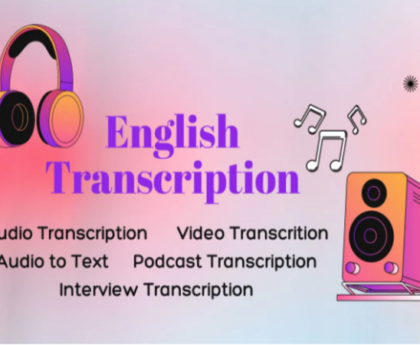Dyslexia is a learning difference that affects the way individuals process language, leading to difficulties with reading, writing, and spelling. It is important to recognize the symptoms of dyslexia early on to provide appropriate support for students. In this article, we’ll explore the common signs of Dyslexia and discuss strategies for helping students navigate their learning journey.
What is Dyslexia?
Dyslexia is a neurological condition that impacts the way the brain processes written and spoken language. It is not a result of intelligence or vision problems but rather a distinct way the brain is wired. Individuals with dyslexia may face challenges in phonological processing, which affects their ability to recognize and manipulate the sounds in words.
Common Symptoms:
1. Reading Challenges:
- Difficulty in decoding words.
- Slow and laborious reading.
- Frequent mistakes in recognizing words.
2. Spelling Difficulties:
- Poor spelling, often with letter reversals.
- Inconsistent spelling of the same word.
3. Writing Struggles:
- Difficulty with grammar and punctuation.
- Challenges in organizing thoughts coherently.
4. Phonological Processing Issues:
- Trouble recognizing and manipulating sounds in words.
- Difficulty connecting sounds to letters.
5. Memory Challenges:
- Difficulty remembering sequences, such as the alphabet or multiplication tables.
6. Directional Confusion:
- Difficulty distinguishing left from right.
- Letter and number reversals.
7. Difficulty with Sequencing:
- Challenges in following a sequence of instructions.
8. Avoidance of Reading:
- Unwillingness to engage in reading-related activities.
Early Identification and Intervention:
Identifying dyslexia early is crucial for providing effective interventions. Teachers, parents, and caregivers play a significant role in recognizing these signs. If a student exhibits persistent difficulties in reading and writing despite receiving appropriate instruction, it’s essential to consider the possibility of dyslexia.
Strategies for Support:
1. Multisensory Learning:
- Implement teaching methods that engage multiple senses, such as sight, sound, and touch.
2. Structured Literacy Programs:
- Use programs that emphasize the structure of language, including phonics and decoding.
3. Individualized Instruction:
- Tailor instruction to meet the specific needs of the student.
4. Assistive Technology:
- Explore tools like audiobooks and speech-to-text software to support reading and writing.
5. Positive Reinforcement:
- Celebrate achievements and progress to boost the student’s confidence.
6. Provide Additional Time:
- Allow extra time for reading and writing tasks.
7. Encourage a Growth Mindset:
- Foster a belief that intelligence can be developed through dedication and hard work.
Signs of Dyslexia in Teens and Adults:
Difficulty reading, especially when reading aloud.
- Reading and writing are slow and require a lot of effort.
- Problems with spelling words correctly.
- Avoidance of activities involving reading due to difficulties.
- Mispronunciation of names or words and difficulty recalling specific words.
- Spending an unusually long time on tasks related to reading or writing.
- Challenges in summarizing a story or information.
- Struggles in learning a foreign language.
- Difficulty solving math word problems.
Identifying these symptoms can help in understanding and addressing in teens and adults, allowing for appropriate support and interventions.
Creating Dyslexia-Friendly Classrooms:
Educators can contribute significantly to creating inclusive learning environments:
1. Raise Awareness:
Educate staff, students, and parents about dyslexia to reduce stigma.
2. Flexible Assessment:
Offer alternative assessments that focus on understanding rather than just reading and writing.
3. Inclusive Teaching Materials:
Provide varied materials, including audio resources and visual aids.
4. Peer Support:
Encourage a supportive peer environment to boost the confidence of students with dyslexia.
When to see a doctor
- Most children typically start learning to read by kindergarten or first grade, but children with dyslexia may struggle with reading at this stage.
- If you observe that your child’s reading level is below the expected level for their age or notice other signs of dyslexia, it’s important to discuss it with your healthcare provider.
- Undiagnosed and untreated dyslexia can lead to persistent reading difficulties that extend from childhood into adulthood. It is crucial to address dyslexia early on to provide necessary support and interventions.
How can I prevent dyslexia?
Dyslexia can’t be stopped from happening, but there are ways to manage it, especially when it comes to learning and reading. Here’s what you can do:
1. If you see any signs of dyslexia early on, talk to a healthcare provider.
2. Collaborate with your child’s school to create a personalized education plan.
3. Take care of your child’s mental health, and if they struggle with anxiety or other problems linked to dyslexia, think about getting mental health support.
Conclusion:
Understanding dyslexia and its symptoms is crucial for fostering an inclusive educational experience. By recognizing the signs early and implementing appropriate strategies, educators and parents can empower students with dyslexia to thrive academically and build confidence in their unique learning journey. Embracing a supportive and understanding approach allows these students to overcome challenges and reach their full potential.




